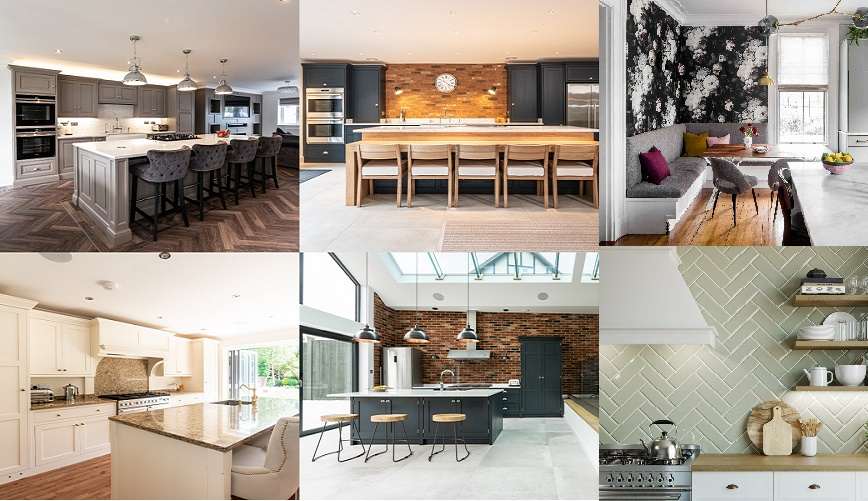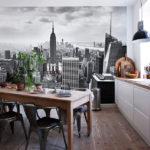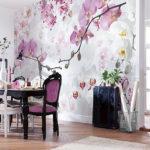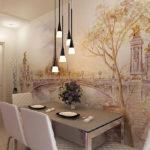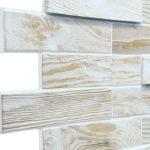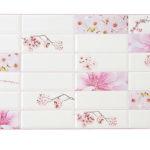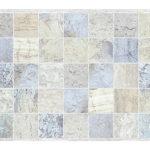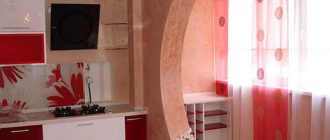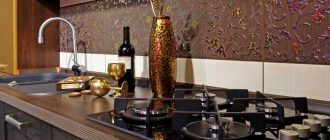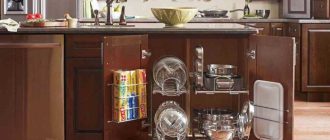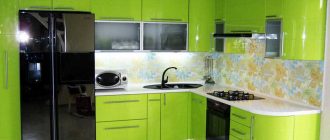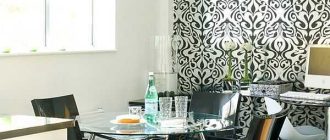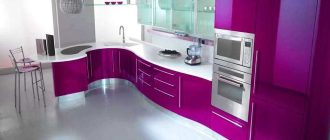The kitchen is where we start the day, and you want it to be cozy and practical. When you start renovating it, think about what you want to get in the end. Kitchen is a difficult room, where there is high temperature and humidity. They can lead to damage to finishing materials. Modern building materials allow you to solve these problems and create an attractive design with a budget and taste. What to finish the walls in the kitchen consider in this article.
Simple wall decoration in the kitchen can change a lot, even change the style without changing the furniture, visually reduce or increase the room. The main thing is to correctly assess the conditions and select materials.
Contenido del artículo
Traditional methods and materials
Let’s briefly go over the known options for finishing the walls. They can not be discounted, as in each category regularly appear new materials with improved characteristics and properties: new types of paints, wallpaper, tiles.
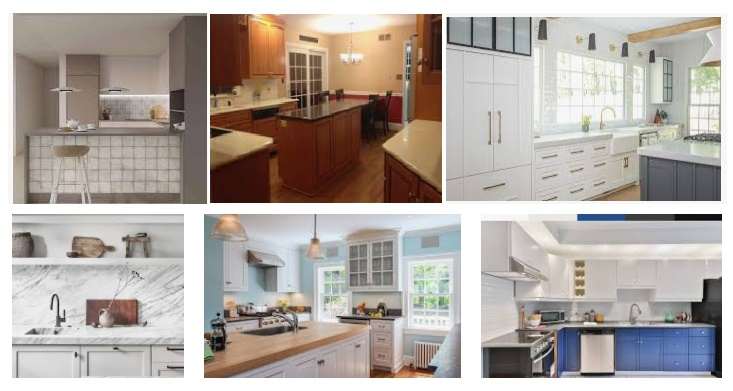
Painting or whitewashing
Painted walls for some time were out of fashion. Now they are back on the peak, because it combines well with other finishing materials. And combining – one of the trends of recent years in the design of rooms.
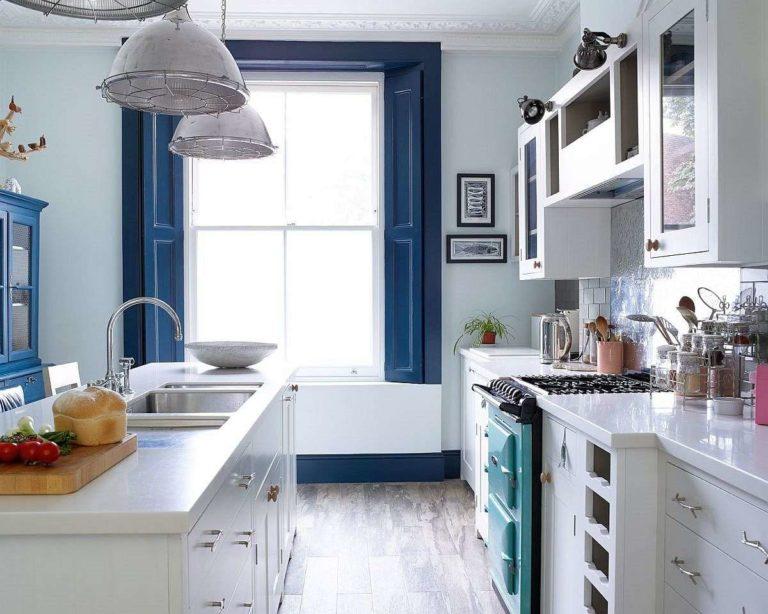
Pros of painted walls in the kitchen:
- A wide choice in terms of color range. And in one color there are different in appearance of the surface: matte, semi-matte, glossy and semi-glossy.
- Different performance properties. Many of the colors are washable with detergents and brushes.
- Easy and quick to change color.
- You can paint the walls yourself, there is no need for expensive tools or special training.
- A wide range of prices.
In general, painted walls in the kitchen – a budget and fast repair option.
Before starting work, follow a couple of recommendations:
- First, choose the color of the kitchen set and only after that, decide on the paint color. When the color of the walls or furniture is not neutral – gray, white or beige, it is very easy to make a mistake when choosing a shade or even color.
- If the furniture is mounted and hinged – these are additional challenges when painting.
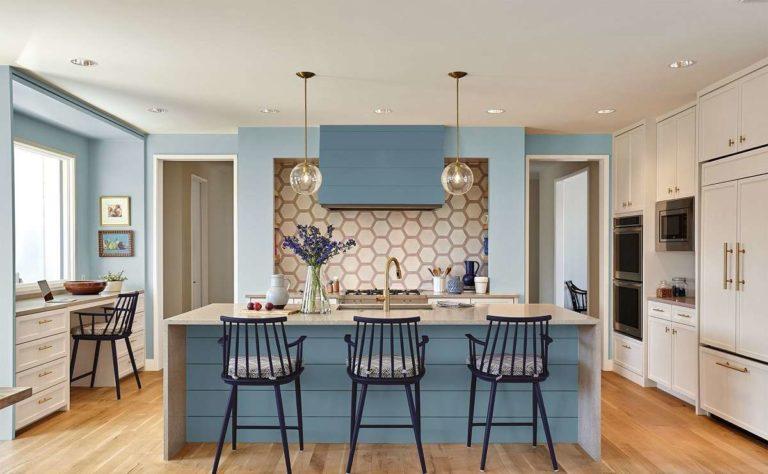
Minuses of painting kitchen walls:
- Paints accentuate the imperfections of the walls. The walls need to be leveled before painting.
- Not all types of paints are washable, pay attention to this when choosing.
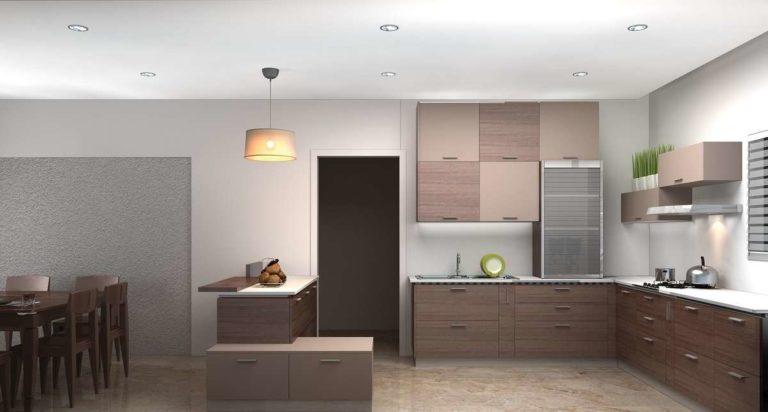
Except for the need for leveling, painted walls in the kitchen do not have any significant disadvantages. But leveling is done only once, and you can paint at least every year.
Additionally, we recommend reading the article “Textured paint for walls – the perfect replacement for wallpaper”.
Ceramic tiles
Finishing kitchen walls with ceramic tiles is one of the most durable and hygienic solutions, but it is not cheap. Good tiles are expensive and put it on a quality tile adhesive.
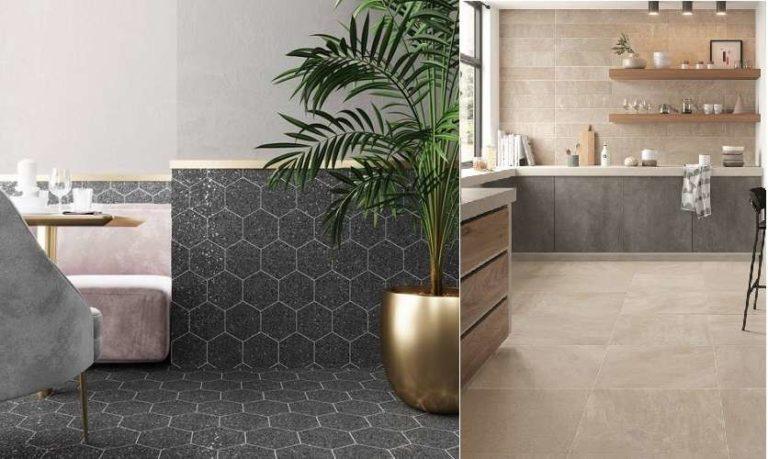
To save budget will help to finish the working wall in the kitchen tiles, and the rest of the walls inexpensive materials. Since the areas near the kitchen stove and sink are the most problematic, ceramic will protect the walls from temperature and moisture, in addition, it is well cleaned.
According to the requirements of manufacturers under the tiles need level walls. But a difference of 3-5 mm per square meter is allowed, depending on the size of the tile.
Pros of finishing the walls in the kitchen with tiles:
- A large selection of sizes. Ceramic tiles can be as a side of 2-3 cm (mosaic), and large-format – with a side of 50-60 cm and even more.
- Different shapes.
- The possibility of creating patterns, combinations, etc.
- Easy to clean.
- Durability.
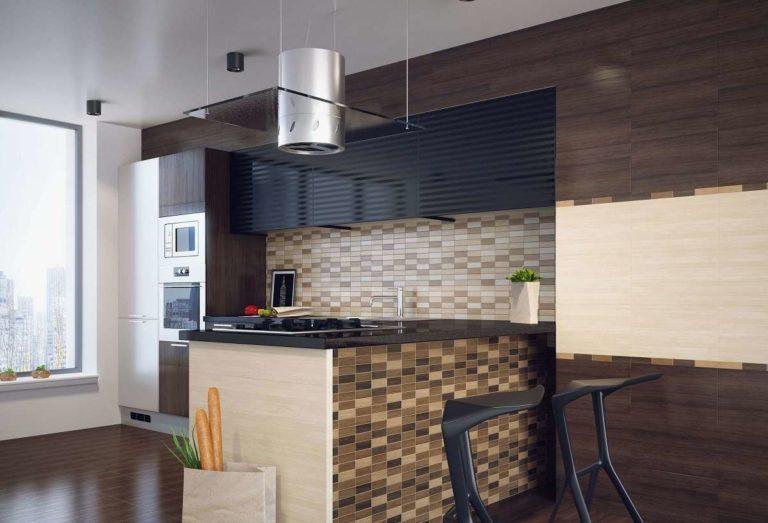
If you need a practical solution for many years – it is just about ceramic tiles. No problems with care, you can wash even with heavy chemicals and brushes. But there are also disadvantages:
- Laying costs.
- Self laying tiles – an activity not for everyone, you need experience.
- The room is too cold and humming.
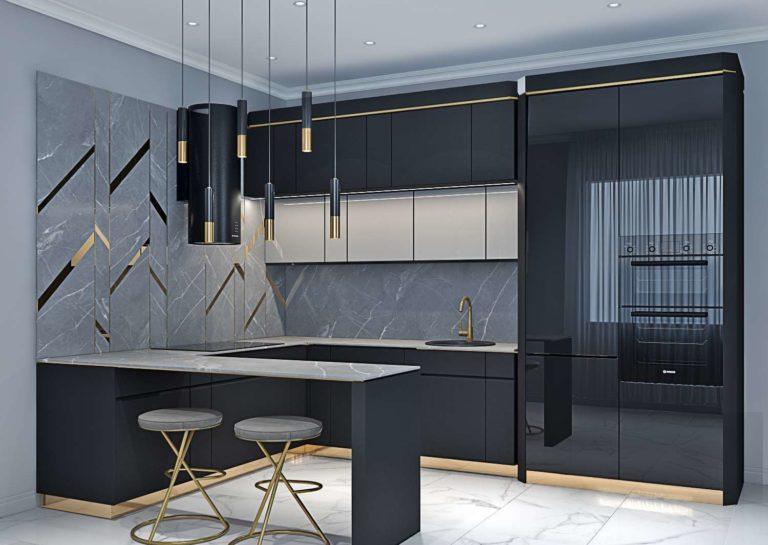
Make a decision weighing all the arguments. Not everyone likes to have the same interior for decades. And tiles are not so easy to change, its dismantling – not an easy event.
Deciding to finish the walls in the kitchen tiles, try to make them neutral. In this case, with the help of decor will be able to change the style of design, without changing the finish of the walls.
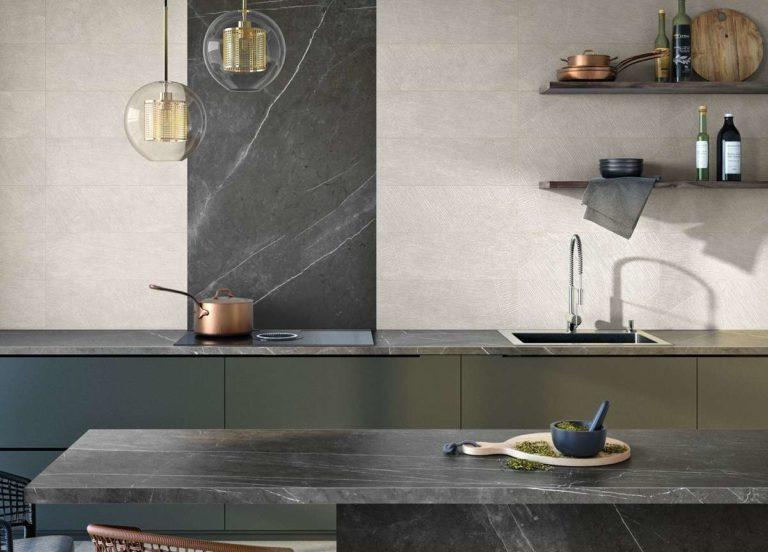
Many may have aesthetic complaints – too uncomfortable. In general, if you like stability, choose the finishing of the kitchen tiles.
Porcelain stoneware
All of the above about ceramic tiles is true for porcelain stoneware. The difference in technology and appearance of products. This adds nuances:
- The size of porcelain stoneware tiles is not small and under them you need level walls with good bearing capacity – the material is heavy.
- Special glue is needed.
- It is more difficult to work than with tiles.
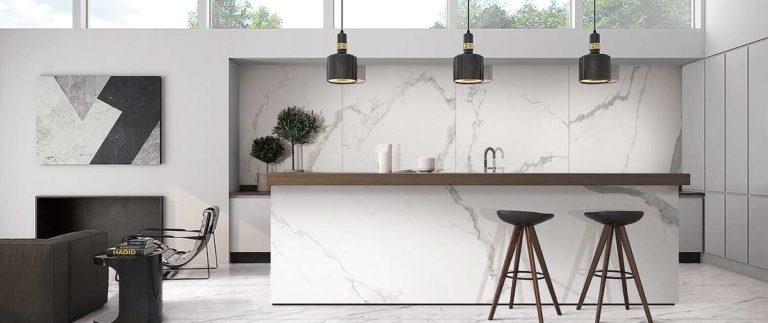
Porcelain stoneware looks good in large rooms, in a six-meter kitchen it is inappropriate. It is clear that tiling a kitchen with this material will not be cheap.
Wallpaper
One of the most budgetary options for finishing the walls in the kitchen – wallpaper. What wallpaper can be glued in the kitchen? Any. The difference is that paper will have to re-glue in a year or two, and more expensive, “washable” will last 3-5 years. The latter include heavy vinyl wallpaper, which can be washed with a brush.
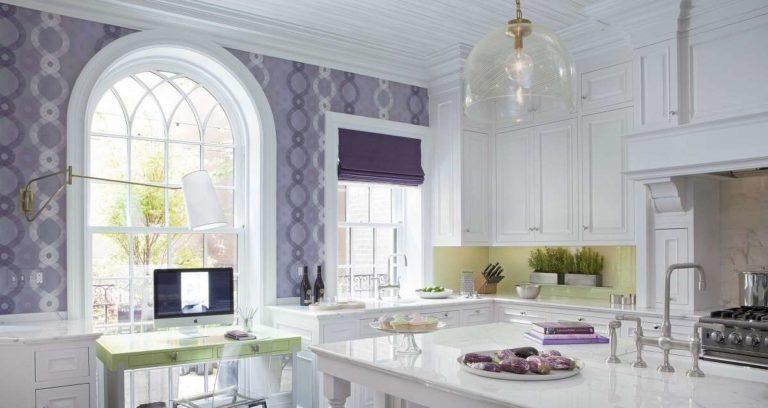
If you cover the walls in the kitchen to make fiberglass wallpaper, then they can be repainted 5-10 times. They are not cheap, but they will last a long time, which makes their use justified.
Photo wallpaper
A great and easy option to decorate the wall in the kitchen. Great variety, you can choose a photo wallpaper of any theme, suitable for the desired style or taste. Good technical characteristics, manufacturing on different bases: vinyl, fleece. Do not absorb odor, easy to clean, not subject to changes in temperature and moisture.
- Photo wallpaper creates the effect of a view of the city from the window of a skyscraper lengthening the room
- Photo wallpaper creates a cozy corner in the dining area
- Photo wallpaper separates the table from the main part of the kitchen.
Well, for the price, it will be a little more expensive than ordinary wallpaper.
Modern materials. Panels
Wall panels – a modern material for finishing the walls. They are made of: MDF, fiberboard, chipboard or PVC, etc., including natural – wood, bamboo. Form of production: squares, rectangles, strips, sheets.
There are two ways of mounting the panels on the wall – glue and fastening to the battens. Panels are immediately glued to the wall when they are flat, otherwise irregularities will be visible. Fastening to the battens allows you to hide not only the unevenness of the wall, but also the surface wiring.

From wood
A thin cut of expensive wood is glued onto panels made of cheap wood. The surface is painted and a protective coating is applied.

Take into account that wood reacts to changes in humidity, but if ventilation works well, this is not a problem. Wood finishes create a solid appearance.
MDF
A vinyl film imitating wood, stone, and other natural materials is applied to a formed sheet of MDF. There are options smoothly colored, with imitation of tiles, bricks, etc.
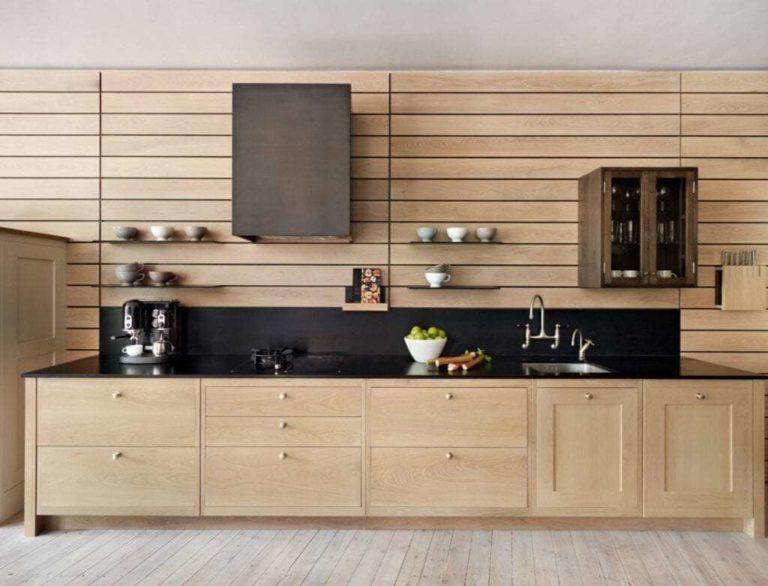
MDF panels do not react to humidity, resistant to stress, which allows them to be used in the finishing in the kitchen. It is allowed to mount on a batten or glue on flat walls.
CHIPBOARD
On the surface of the chipboard sheet glued plastic or a layer of veneer. This is the cheapest option for wall panels, but not the most popular because of the appearance. Plastic is not liked by everyone, and the appearance of veneered boards depends on the quality of gluing and the cut itself.
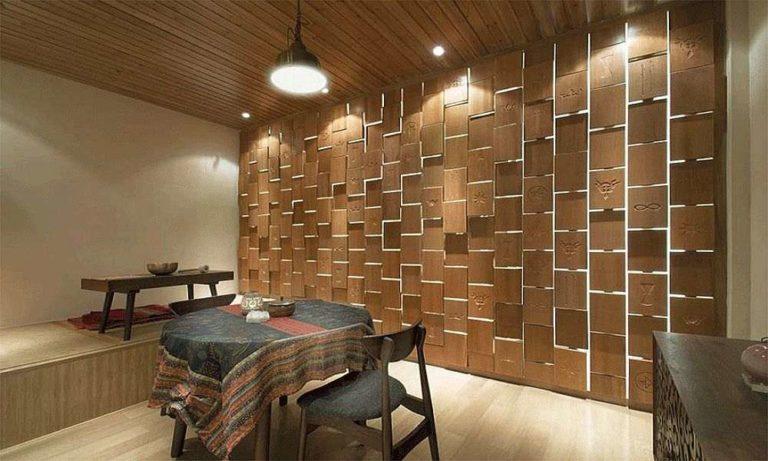
In addition, there are concerns about buying particleboard with a high level of formaldehyde emission. Choose with a class E1 – this is the designation of the natural emission level of wood. Quality chipboard finishing boards are comparable in price to MDF, but are less durable and do not have the same variety.
PVC
In construction stores, there is a huge selection of PVC finishing materials. Different sizes, bright varied patterns, imitation under wood, or monochrome, all this makes them popular. They are resistant to moisture and can be washed. Without making any effort, you can decorate the wall in the kitchen yourself, in addition, PVC materials are cheap.
- PVC panel “Whitewashed Oak”
- Decorative PVC panel “Sakura”
- Decorative PVC panel “Blue Marble”
When in doubt about the quality of PVC panels, give preference to Russian and European brands.
Gypsum vinyl
Gypsum board is covered with PVC vinyl film on both sides. It can be glued to the wall or mounted on a batten. Available as sheets, lamellae of different widths without or with drawings.
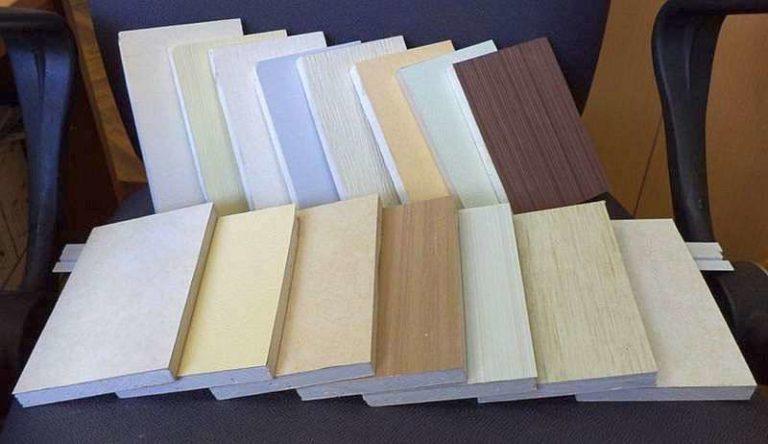
Panels can be cleaned with a brush, but without abrasives. Service life is stated 25-50 years. Of the disadvantages – not recommended for wet rooms.
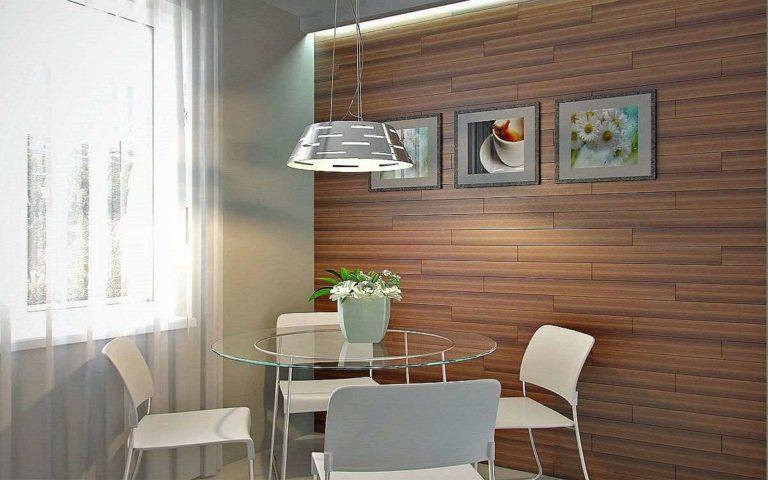
It is recommended to install on special profiles. Because of all these nuances, they can not be called cheap, but the price is not too high.
Cork panels
Cork veneer is glued on a paper or wood base and covered with lacquer or wax to protect it from moisture. The protective layer allows you to wash such a coating without the use of abrasives and brushes. The material has very good soundproofing characteristics, pleasant to the touch.
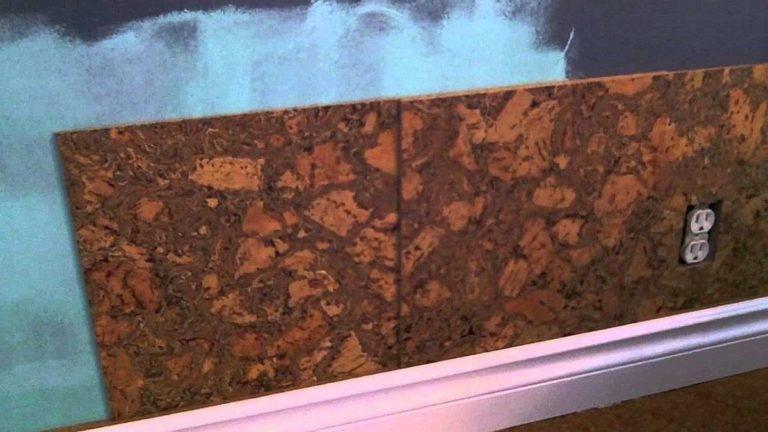
Cork boards are glued immediately on the wall, so they require a level base.
Minuses:
- high price;
- dents may remain from impacts;
- rather specific appearance, which is not to everyone’s liking.
Glass
A special kind of glass is used that looks more like ceramic. Can be translucent, transparent or frosted. A color or pattern is applied to the back side. Requires a special installation system, which increases the cost of such wall decoration. In addition, the mass of glass panels is not small, so that the load-bearing capacity of the wall and its top layer should be high.
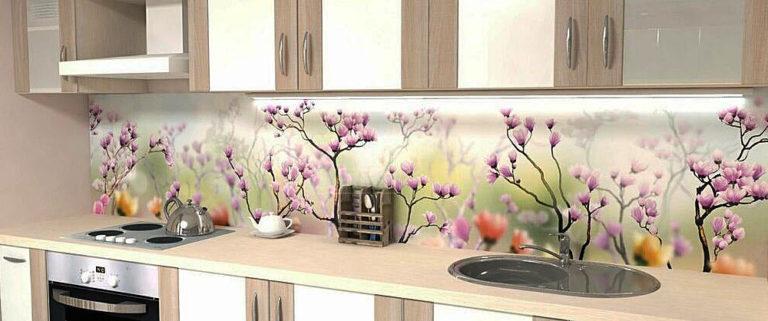
The best way to make the decor of the working area.
For the kitchen, this option is good, but you can not wash with abrasives, and from blows there are cracks and chips. Glass wall panels have a specific look, suitable for decorating the kitchen in a modern style, techno, minimalism, loft.
Decorative plaster
Plaster itself has been known for a long time, but it was used for rough work – to level the walls, seal cracks and crevices. The use of this material as a finishing material, became popular not so long ago. Not all types of plaster are suitable for kitchen decoration, so let’s consider what is best to use for finishing kitchen walls instead of wallpaper.
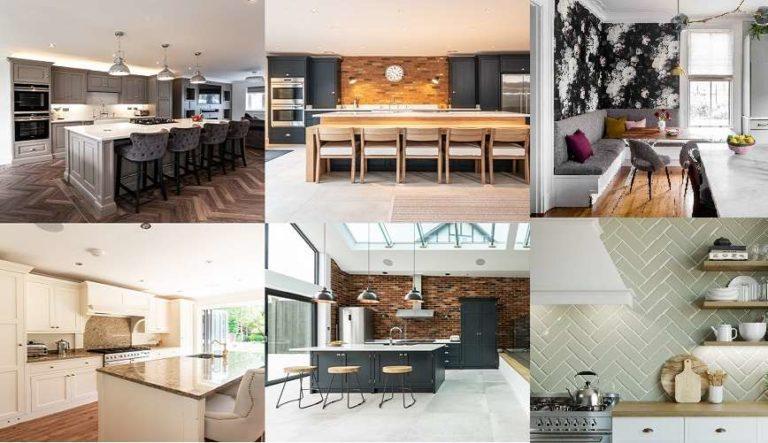
Acrylic
Sold ready-made, to get the desired color, you can add a tint. From the pros – plasticity, quick drying, easy application and care.
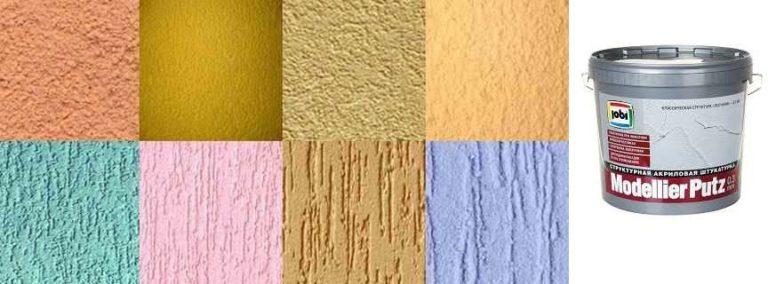
Acrylic decorative plaster in the composition can have different inclusions, which gives a different appearance. The appearance is also affected by the application technique. This is not a good option for the kitchen in terms of care, since the structure of most acrylic plasters – porous. For finishing walls, it is better to choose small-porous and smooth types – it is easier to care for and poorly absorb odors.
Silicone compositions
Silicone plaster is sold ready for use. This is the best of all types of decorative plaster and is great for the kitchen. It is very plastic, has excellent adhesion to all building materials, and conducts vapor.
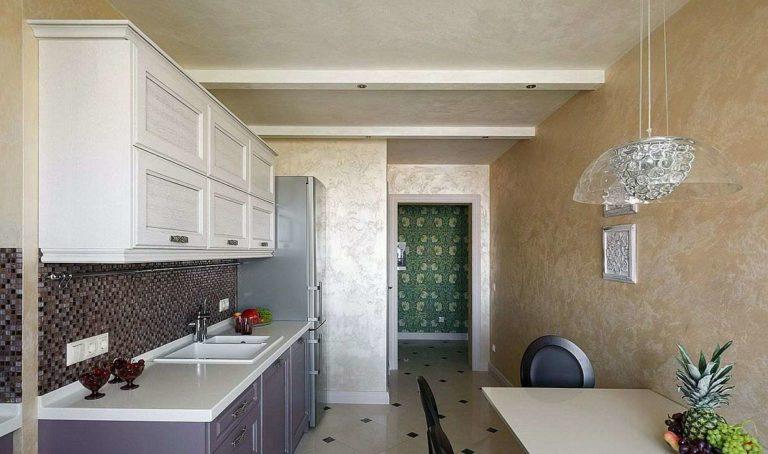
After drying can be washed, service life up to 20 years. Decorate the kitchen inexpensively with this material will not work.
Textured plaster
One of the most artistic types. It can have the appearance of leather, silk, wood, velvet and other materials. You can find a budget option. And the low price is not an indicator of poor quality. Just used inexpensive components.
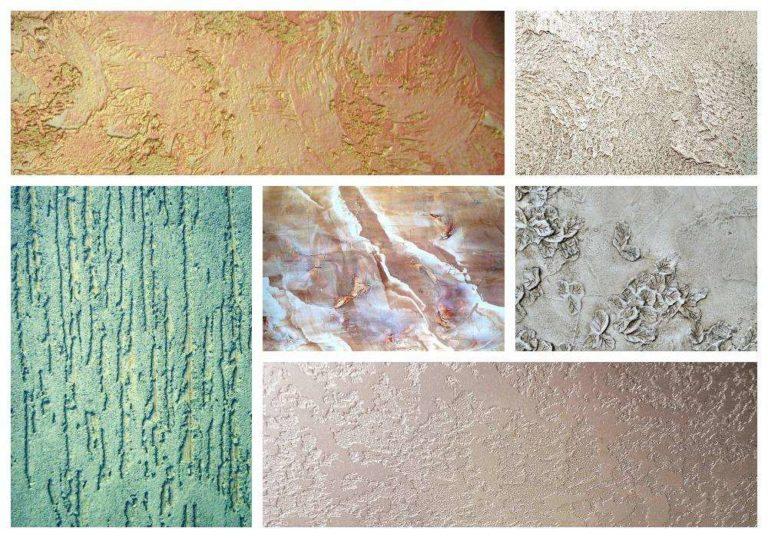
When choosing, pay attention to the fact that after drying the walls can be washed.
Venetian plaster
This material is not cheap. There are many types of Venetian plaster, as well as techniques of its application. If we talk about performance characteristics – they are very high. The coating does not fade, it is difficult to damage mechanically, you can wash.
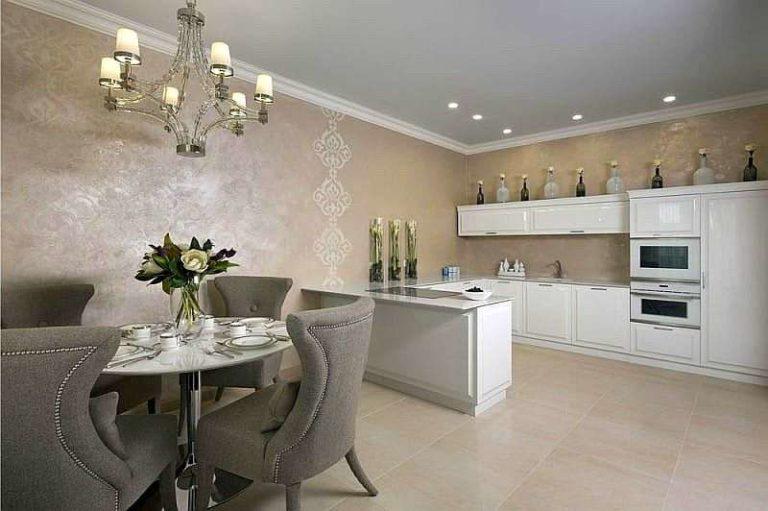
One of the main disadvantages, except for the price – the complexity of application. Independently to achieve a beautiful surface is very difficult. Without experience to get a good look is not always possible. Given the cost of the material, any remodeling is a material loss. If you decide to hire a master, it is better to preliminarily ask for customer contacts and see his work.
Is plaster so good
Many believe that finishing the walls in the kitchen with decorative plaster is impractical, since it will be difficult to wash. However, contamination is present only in the working area and near the stove, where a section of plastered wall can be hidden behind tiles, washable wallpaper, etc.
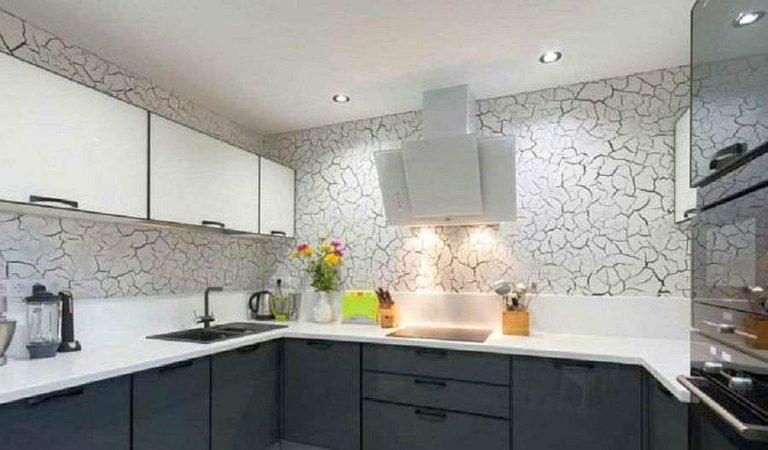
In addition, there are smooth and dense compositions of plaster, and it will not be more difficult to wash the walls than ceramics. And since there will be no seams, it will be even easier to do it.
As cheap as wallpaper, to make repairs in the kitchen plaster will not work. But given the long service life of the coating, some increase in price is justified.
The minus of plaster is that it is porous and will absorb odors.
Finishing under a brick wall
One of the fashionable trends in modern design is the imitation of a brick wall. Such a surface can imitate with varying degrees of certainty some types of wall panels.

But imitation is still just a fake. If you want to get “almost natural” brick wall, you can make it yourself. Take the usual old clay brick, a Bulgarian with a disk on the stone or any other tool suitable for cutting bricks. Brick from the dismantling of old buildings cut lengthwise into plates about a centimeter thick. It turns out to be ceramic tiles.
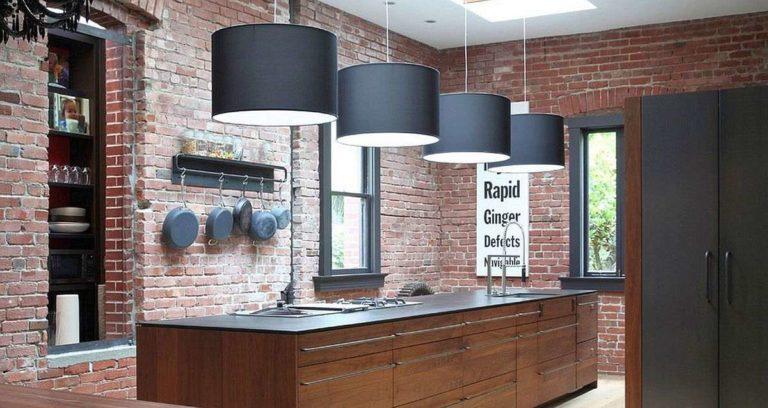
Two tiles on the sides already have a natural look. The rest are finalized by sanding, making the surface not flat, but shabby, that is, artificially aged. Just like the front of an old brick. Rub on the grinding wheel, against each other, against the asphalt. Round off the edges a little, too, using the same techniques. It remains to lay out as tiles on the kitchen wall. In the end, paint or varnish – depends on the style and idea.
Carpentry
If you wrap the walls with wagoning when renovating the kitchen, you will get an interior in the style of country or Provence. Most of all these styles are suitable for the design of a private house or cottage, but you can apply and in the apartment.
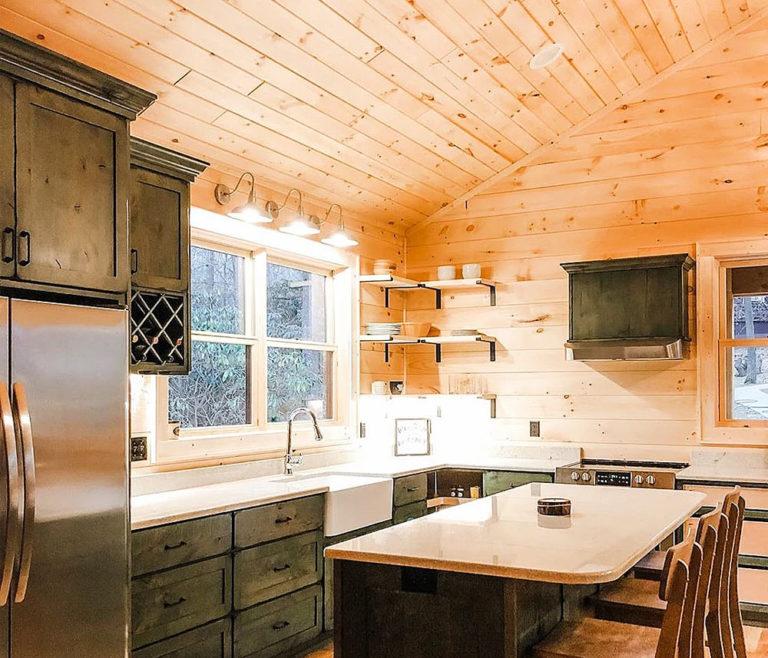
After installation, be sure to paint the wood with a washable paint. The wood will look more modern and will retain its appearance for a long time.
Because of the peculiarity of its appearance, wagoning is not suitable for all styles. Another disadvantage is the reduction of the area, because for fastening you need a batten.
Bottom line
Beautiful wall design in the kitchen does not necessarily have to be expensive. Think through the options, select materials and colors. After the repair, the kitchen will please you both during cooking and eating.
In conclusion, watch the video about the choice of modern materials for kitchen wall design.

